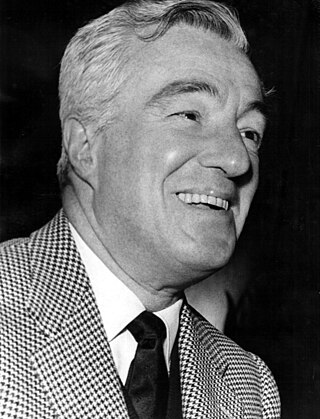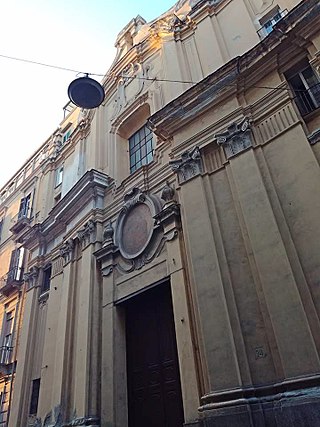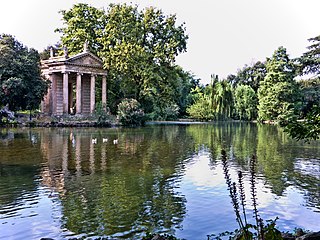This article needs additional citations for verification .(December 2022) |
The Villa Giulia is a villa in Naples. It is located in the Barra district and is part of the Vesuvian villas of the Golden Mile. [1]
This article needs additional citations for verification .(December 2022) |
The Villa Giulia is a villa in Naples. It is located in the Barra district and is part of the Vesuvian villas of the Golden Mile. [1]
The structure is mentioned in the Map of the Duke of Noja (18th century). The structure was called the "villa and delight of San Nicandro", and consisted of the factory courtyard.
Villa Giulia was designed by Luigi Vanvitelli.
The work on the site was supervised by Francesco Collecini, Pietro and Carlo Vanvitelli, sons of Luigi Vanvitelli. In June 1760, they took measurements and noted them on a praetorian tablet. In letters to his brother Urbano, Luigi said Carlo had tonsillitis. On 14 February 1761, Pietro and Marcello Fonton inspected the house, and inspected it three days later. Luigi was accompanied by Pietro to plant the façade. According to the letters, as construction was finishing, Luigi intervened several times due to the inexperience of his children, then in their early twenties. [1] [2]
The villa was bought by Domenico. It was modified by the decision of his grandson, Domenico Cattaneo Della Volta, third prince of San Nicandro, subject of King Naples Ferdinand IV. The country house was changed into a villa, to follow the King when the court moved to the Reggia of Portici, for hunting. The villa was called Giulia in honor of the wife of Volta, Giulia di Capua. Prince Domenico, in the last years of his life, lived in the villa, where he died in 1782.
The villa was expanded and redesigned by the architect Nicola Breglia in 1886, at the behest of the Duchess Giulia Cattaneo Pignatelli. By her wish, the villa was left to Diego de Gregorio di Sant'Elia, who adopted the surname Cattaneo by testamentary will. The villa is owned by his descendants. [3]
Some features of the villa are the historic apartment, decorated by Ignazio Perricci and Salvatore Cepparulo, and the vast garden that shows the botanical species of the ancient park, with camellias and various statues. [1] [4]

Vittorio De Sica was an Italian film director and actor, a leading figure in the neorealist movement.

Francesco Solimena was a prolific Italian painter of the Baroque era, one of an established family of painters and draughtsmen.
This is a list of music conservatories in Naples, Italy.

Sant'Anna dei Lombardi,, and also known as Santa Maria di Monte Oliveto, is an ancient church and convent located in piazza Monteoliveto in central Naples, Italy. Across Monteoliveto street from the Fountain in the square is the Renaissance palace of Orsini di Gravina.

Miano is a suburb of Naples, Italy, with a population of around 26,000.
The Contini clan is a powerful Neapolitan Camorra clan operating in the city of Naples, and more specifically in the area of the Naples Central Station. The clan's traditional powerbase is the Arenaccia district. It also operates in the Poggioreale, Vasto, Mercato and San Carlo all'Arena suburbs of Naples. The clan is also active outside Italy, particularly in Barcelona, Spain, in Amsterdam, Netherlands and in Eastern Europe. The Contini clan is also one of the founding clans of the Secondigliano Alliance, which is considered by the authorities as the most powerful Camorra group that is still active.

Carlo Vanvitelli (1739–1821) was an Italian architect and engineer, who worked mainly in Naples and its surrounding area.

Bartolomeo Vecchione is a late 18th-century Italian architect of the late-Baroque or Rococo period, active in and around Naples.

Santa Maria della Stella is a church located on Via Stella 25 in the quartiere of its name in Naples, Italy.

The Palazzo Zevallos Stigliano is a Baroque palace located on Via Toledo number 185 in the quartiere San Ferdinando of central Naples, Italy. It is also called the Palazzo Zevallos or Palazzo Colonna di Stigliano, and since 2014 serves as a museum of artworks, mainly spanning the 17th through the early 20th centuries, sponsored by the Cultural Project of the bank Intesa Sanpaolo. This museum is linked to the Museum or Gallerie di Piazza Scala in Milan and the Museum at Palazzo Leoni Montanari in Vicenza, also owned by the Bank.

Sebastiano Biancardi, known by the pseudonym Domenico Lalli, was an Italian poet and librettist. Amongst the many libretti he produced, largely for the opera houses of Venice, were those for Vivaldi's Ottone in villa and Alessandro Scarlatti's Tigrane. A member of the Accademia degli Arcadi, he also wrote under his arcadian name "Ortanio". Lalli was born and raised in Naples as the adopted son of Fulvio Caracciolo but fled the city after being implicated in a bank fraud. After two years wandering about Italy in the company of Emanuele d'Astorga, he settled in Venice in 1710 and worked as the "house poet" of the Grimani family's theatres for the rest of his career. In addition to his stage works, Lalli published several volumes of poetry and a collection of biographies of the kings of Naples. He died in Venice at the age of 62.
Giulia Carafa Cantelmo Stuart, duchess di Cassano (1755–1841) was an Italian courtier. She was a supporter of the Parthenopean Republic and alongside her sister, she was known as one of the Republic's two Madri della Patria.
Andrea Vici (1743–1817) was an Italian architect and engineer, active in a Neoclassical style. He was a pupil of Luigi Vanvitelli, and active in the Papal States comprising parts of Lazio, Umbria, and Marche.

The Teatro Nuovo is a theatre located on Via Montecalvario in the Quartieri Spagnoli district of Naples. The original theatre was an opera house designed by Domenico Antonio Vaccaro. Completed in 1724, it was also known as the Teatro Nuovo sopra Toledo and the Teatro Nuovo de Montecalvario. The theatre specialised in the opera buffa genre and saw the world premieres of hundreds of operas in its heyday. These included fifteen of Cimarosa's operas and seven of Donizetti's. The present theatre is the third to have been erected on the site following its destruction by fire in 1861 and again in 1935.

The Palazzo di Sangro di Casacalenda is an 18th-century aristocratic palace located across a pizza from the church of San Domenico Maggiore in central Naples, region of Campania, Italy. The East flank of the facade faces the facade of the church of Sant'Angelo a Nilo.

Domenico Sacchinelli was an abbot of the Catholic church. He's best known for having followed and helped Fabrizio Ruffo and the Sanfedisti army to restore the Kingdom of Naples and the Bourbon dynasty, after the short-lived Parthenopean Republic (1799). In 1836, after a few decades, he published his memoirs of that period, titled Memorie storiche sulla vita del cardinale Fabrizio Ruffo.
Salvatore Fighera was an Italian composer of both sacred and secular music. Born in Gravina in Puglia, he completed his musical studies at the Conservatorio di Sant'Onofrio a Capuana in Naples and spent several years in Milan after leaving the conservatory in 1783. On his return to Naples he served as the maestro di cappella of several churches, most notably the Santuario di San Sebastiano Martire, a post he held until his death.

Pinciano is the 3rd quartiere of Rome (Italy), identified by the initials Q. III. The name derives from the Pincian Hill. It belongs to the Municipio II.
The Aprea-Cuccaro clan is a Camorra clan operating in the area of Barra, in the city of Naples.